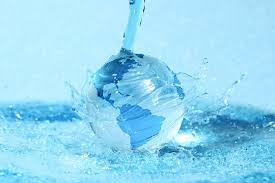Australia and Water Innovation – NextBigFuture.com

The Commonwealth Scientific and Industrial Research Organisation (CSIRO) is an independent Australian federal government agency responsible for scientific research. CSIRO works with leading organizations around the world. From its headquarters in Canberra, CSIRO maintains more than 50 sites across Australia and in France, Chile and the United States of America, employing about 5500 people.
Research areas are
Agriculture and Food
Data61
Energy
Land and Water
Mineral Resources
Manufacturing
Oceans and Atmosphere
Health and Biosecurity
There as a meeting today on Future of Water in San Mateo at the CSIRO Silicon Valley office.
They discussed the linkage between water and energy. Lower water usage results in energy savings because of the energy cost of moving water.
They also discussed the need for distributed water systems and a need for portfolio analysis of water provision.
There is also need to manage the use of different levels of water quality. The example given was that minimally treated waste water could be used to water golf courses or yards.
Recycled water is carried in purple pipes in Southern California and some other locations. Purple pipes carry sewage water that’s been filtered for solids and cleaned of some impurities.
Measures to cut water use by 25% across California were implemented in 2015, following a four-year drought in the state that caused the fallowing of 542,000 acres of land, total economic costs of $2.74 billion, and the loss of approximately 21,000 jobs.
UC Davis researchers found that, while the 25% target had not quite been reached over the one-year period — with 524,000 million gallons of water saved — the measures’ impact had positive knock-on effects for other environmental objectives.
The decrease in water usage translated into a significant electricity saving of 1,830 gigawatt hours (GWh) [About $360 million in electricity saving at 0.20 cents per kwh). Interestingly, those savings were around 11 percent greater than those achieved by investor-owned electricity utilities’ efficiency programs over the same period.
Water, drought and Australia
The worst drought to affect Australia happened between the years 1997 to 2009. In 2010 and 2011, La Niña finally broke the drought. For many locations 2010 was the first year of above-average rainfall since 1996. The rainfall dramatically increased surface water storage and soil moisture, effectively ending the drought in the south-east. Very wet conditions continued through 2011, resulting in floods in Queensland and northern Victoria.
Australia is the driest inhabitable continent on Earth and its installed desalination capacity comprises around 1% of the world’s total. Until a few decades ago, Australia met its demands for water by drawing freshwater from dams and water catchments. As a result of the water supply crisis during the severe 1997–2009 drought, state governments began building desalination plants that purify seawater using reverse osmosis technology.
Australia’s first working desalination plant was the Kwinana plant in Perth, and was completed in November 2006. A second plant on the Gold Coast began operations in February 2009. The Kurnell Desalination Plant in Sydney was opened on 28 January 2010.
A list of desalination plants in Australia is at wikipedia.
Water: Science and Solutions for Australia provides information on the status of Australia’s water resources and their future prospects, the many values Australia holds for water, and the potential for using water more effectively to meet the growing demands of cities, farmers, industries, and the environment. Available for free download in multiple formats.
